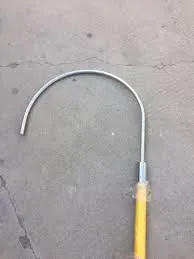
-
 Afrikaans
Afrikaans -
 Albanian
Albanian -
 Amharic
Amharic -
 Arabic
Arabic -
 Armenian
Armenian -
 Azerbaijani
Azerbaijani -
 Basque
Basque -
 Belarusian
Belarusian -
 Bengali
Bengali -
 Bosnian
Bosnian -
 Bulgarian
Bulgarian -
 Catalan
Catalan -
 Cebuano
Cebuano -
 Corsican
Corsican -
 Croatian
Croatian -
 Czech
Czech -
 Danish
Danish -
 Dutch
Dutch -
 English
English -
 Esperanto
Esperanto -
 Estonian
Estonian -
 Finnish
Finnish -
 French
French -
 Frisian
Frisian -
 Galician
Galician -
 Georgian
Georgian -
 German
German -
 Greek
Greek -
 Gujarati
Gujarati -
 Haitian Creole
Haitian Creole -
 hausa
hausa -
 hawaiian
hawaiian -
 Hebrew
Hebrew -
 Hindi
Hindi -
 Miao
Miao -
 Hungarian
Hungarian -
 Icelandic
Icelandic -
 igbo
igbo -
 Indonesian
Indonesian -
 irish
irish -
 Italian
Italian -
 Japanese
Japanese -
 Javanese
Javanese -
 Kannada
Kannada -
 kazakh
kazakh -
 Khmer
Khmer -
 Rwandese
Rwandese -
 Korean
Korean -
 Kurdish
Kurdish -
 Kyrgyz
Kyrgyz -
 Lao
Lao -
 Latin
Latin -
 Latvian
Latvian -
 Lithuanian
Lithuanian -
 Luxembourgish
Luxembourgish -
 Macedonian
Macedonian -
 Malgashi
Malgashi -
 Malay
Malay -
 Malayalam
Malayalam -
 Maltese
Maltese -
 Maori
Maori -
 Marathi
Marathi -
 Mongolian
Mongolian -
 Myanmar
Myanmar -
 Nepali
Nepali -
 Norwegian
Norwegian -
 Norwegian
Norwegian -
 Occitan
Occitan -
 Pashto
Pashto -
 Persian
Persian -
 Polish
Polish -
 Portuguese
Portuguese -
 Punjabi
Punjabi -
 Romanian
Romanian -
 Russian
Russian -
 Samoan
Samoan -
 Scottish Gaelic
Scottish Gaelic -
 Serbian
Serbian -
 Sesotho
Sesotho -
 Shona
Shona -
 Sindhi
Sindhi -
 Sinhala
Sinhala -
 Slovak
Slovak -
 Slovenian
Slovenian -
 Somali
Somali -
 Spanish
Spanish -
 Sundanese
Sundanese -
 Swahili
Swahili -
 Swedish
Swedish -
 Tagalog
Tagalog -
 Tajik
Tajik -
 Tamil
Tamil -
 Tatar
Tatar -
 Telugu
Telugu -
 Thai
Thai -
 Turkish
Turkish -
 Turkmen
Turkmen -
 Ukrainian
Ukrainian -
 Urdu
Urdu -
 Uighur
Uighur -
 Uzbek
Uzbek -
 Vietnamese
Vietnamese -
 Welsh
Welsh -
 Bantu
Bantu -
 Yiddish
Yiddish -
 Yoruba
Yoruba -
 Zulu
Zulu


Oct . 03, 2024 12:13 Back to list
hydraulic oil for crimping tool
Hydraulic Oil for Crimping Tools Essential Considerations
When it comes to operating crimping tools, the choice of hydraulic oil plays a critical role in ensuring optimal performance and longevity of the equipment. Crimping tools are widely used in various industries, including construction, electrical, and automotive, to securely connect and protect wires and cables. To maintain their efficiency, it’s vital to select the appropriate hydraulic oil.
What is Hydraulic Oil?
Hydraulic oil is a specialized fluid used in hydraulic systems. It transmits power, provides lubrication, and helps in heat dissipation. For crimping tools, which rely on hydraulic pressure to function effectively, the quality of hydraulic oil can significantly impact performance, safety, and reliability.
Choosing the Right Hydraulic Oil
1. Viscosity The viscosity of hydraulic oil is crucial. It affects the flow and pressure within the system. Crimping tools typically require oil with a specific viscosity range to operate effectively in varying temperatures. Manufacturers usually specify the optimal viscosity, which helps ensure the tool operates smoothly without excessive wear.
2. Additives Hydraulic oils often contain additives to enhance performance. These may include anti-wear agents, rust inhibitors, and anti-foaming agents. Selecting oil with suitable additives can prevent damaging deposits and ensure a longer lifespan for your crimping tools.
hydraulic oil for crimping tool

3. Temperature Range Consider the working conditions of your crimping tools. Hydraulic oils are formulated to perform well at certain temperature ranges. Extreme temperatures can cause oil to degrade, affecting performance and potentially causing failures. Always opt for hydraulic oil that matches the ambient and operational temperature conditions.
4. Compatibility Ensure that the hydraulic oil is compatible with the materials used in your crimping tools. Incompatible oils can lead to corrosion or other forms of damage, which can compromise tool functionality.
Regular Maintenance
Regular maintenance, including checking and replacing hydraulic oil, is essential in prolonging the life of crimping tools. Contaminants in hydraulic oil can lead to system failures, so it’s important to monitor oil condition periodically and replace it in accordance with manufacturer guidelines.
Conclusion
In summary, selecting the right hydraulic oil is key to maximizing the performance and lifespan of crimping tools. By considering viscosity, additives, temperature ranges, and compatibility, users can ensure their tools operate efficiently and safely. Regular maintenance will further enhance tool durability, delivering reliable performance in various applications.
Latest news
The Unique Design of Cable Socks
NewsJun.04,2025
Swivel Connectors in Industrial Automation
NewsJun.04,2025
Safety Features of Link Sticks
NewsJun.04,2025
How to choose the best cable pulling winch for sale
NewsJun.04,2025
Fish tape safety precautions
NewsJun.04,2025
Essential Maintenance Tips for Cable Pulling Tools
NewsJun.04,2025











